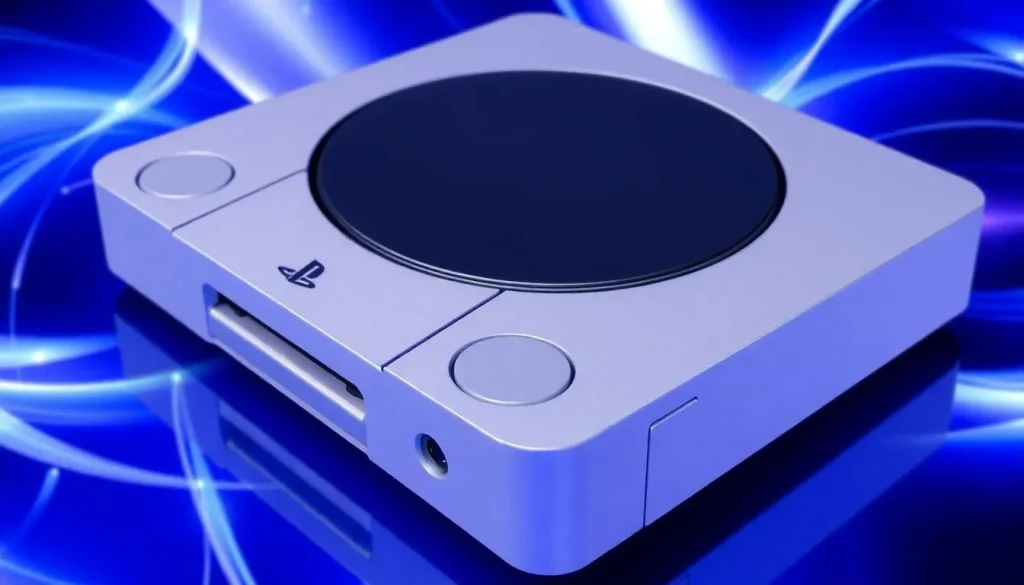PS6 Without Optical Drive: Benefits and Reasons to Consider

The gaming industry is rapidly evolving, and as technology advances, so do the preferences of the players. One significant shift is the move towards digital formats, leading many to wonder what the future holds for physical media in gaming. In this context, the potential release of the PlayStation 6 (PS6) without an optical drive raises several intriguing questions and possibilities for both consumers and the industry.
As we explore this topic, it's essential to understand the implications of such a change. Sony's strategy appears to be aimed at providing flexibility and catering to the diverse needs of gamers. Let's delve into the reasons behind this shift and the potential benefits for users.
- Understanding the decline of physical media in gaming
- The concept of an optional optical drive for PS6
- Advantages of a PS6 without an optical drive
- Market implications and consumer choices
- Consumer concerns and the future of gaming
- Exploring potential features of PS6
- Conclusion: The evolving landscape of gaming
Understanding the decline of physical media in gaming
The trend towards digital gaming has been evident for several years now. Major publishers and platforms are increasingly moving away from physical formats, primarily due to:
- Convenience: Digital downloads allow players to access games instantly without the need for physical storage.
- Space-saving: With games often exceeding 100 GB in size, physical discs take up valuable shelf space.
- Cost efficiency: Digital distribution eliminates manufacturing and shipping costs, often leading to better pricing for consumers.
This shift has been reflected in Sony's financial reports, which indicate a steady decline in revenue from physical sales. As a result, it's likely that the PS6 will be developed with a focus on digital gaming experiences.
The concept of an optional optical drive for PS6
The idea of an optional optical drive for the PS6 is reminiscent of the PS5 Slim's design. This approach allows users to choose between a console with or without a physical drive, thus catering to different preferences and gaming habits.
Imagine purchasing a PS6 without an optical drive and later deciding you want one. With this modular design, you could easily add an optical drive without needing to buy an entirely new console. This flexibility is not only consumer-friendly but also aligns with the trend of personalizing gaming setups.
Advantages of a PS6 without an optical drive
Considering the potential launch of two versions of the PS6—one with an optical drive and another without—there are several advantages to the disc-less model:
- Cost reduction: Manufacturing a console without an optical drive is likely to be cheaper, which can benefit consumers.
- Lower retail price: A reduced production cost could translate into a lower price point for gamers, potentially making the PS6 more accessible.
- More compact design: The absence of an optical drive could lead to a smaller, sleeker console, appealing to minimalist gamers.
Price remains a significant factor for many consumers. If the PS6 with an optical drive is priced at €599.99, the digital version could be offered at around €499.99, creating a compelling choice for those on a budget.
Market implications and consumer choices
This strategy may force competitors like Microsoft to reassess their approach with the upcoming Xbox Next. If rumors are accurate, and the Xbox Next is more powerful yet pricier than the PS6, adopting a similar modular design could attract more consumers who are price-sensitive.
Moreover, this flexible model provides gamers with the opportunity to:
- Upgrade their systems as needed without extensive investment.
- Choose their preferred gaming format, whether digital or physical.
- Adjust their consoles based on changing preferences over time, as gaming landscapes evolve.
Consumer concerns and the future of gaming
While many benefits exist, there are also concerns regarding the move away from physical media:
- Digital ownership: Players might worry about not truly owning their games, as they can be removed from digital libraries by publishers.
- Internet accessibility: Digital-only consoles may pose challenges for users in areas with poor internet connectivity.
- Game preservation: The long-term availability of digital games remains a question, especially with changing platforms and services.
As we look towards the future, it's essential to balance innovation with consumer needs. The gaming community will continue to engage in discussions about the implications of a fully digital gaming landscape, and how companies like Sony can best serve their audience.
Exploring potential features of PS6
Beyond the optical drive, the PS6 is expected to introduce several new features that could enhance the gaming experience:
- Improved graphics: With advancements in hardware, players can expect higher resolution and frame rates.
- Faster loading times: Innovations in SSD technology could significantly reduce game load times.
- Enhanced virtual reality (VR) support: As VR gaming continues to grow, the PS6 might offer improved compatibility and features.
These enhancements, coupled with the option for an optical drive, could position the PS6 as a leader in the next generation of gaming consoles.
Conclusion: The evolving landscape of gaming
The potential for a PS6 without an optical drive reflects a broader trend in the gaming industry. By prioritizing flexibility and user choice, Sony may be setting the stage for the future of gaming consoles. As consumers, it’s crucial to remain informed and engaged with these developments, ensuring our voices are heard in shaping the gaming landscape.
For further insights on the comparison between digital and disc versions, check out this video:




Leave a Reply